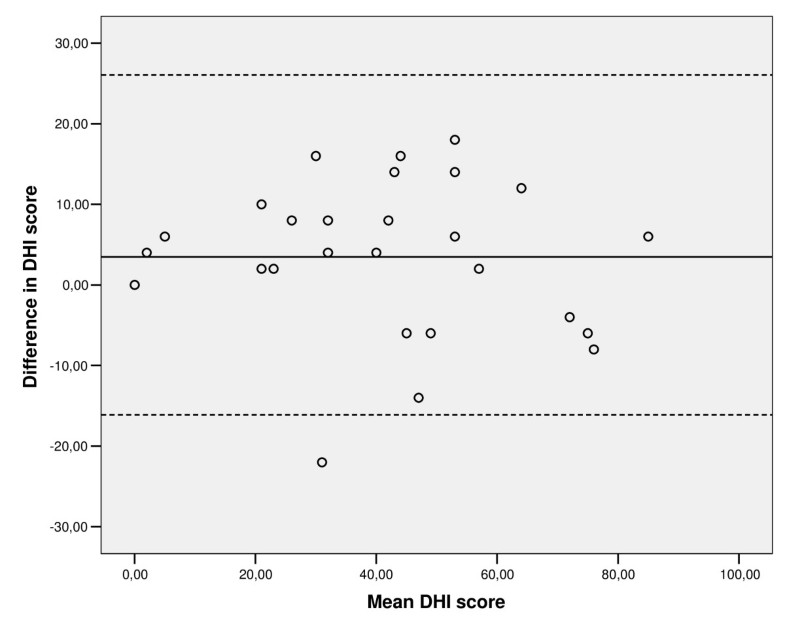

To assess the impact of dizziness and balance in participants, the Dizziness Handicap Inventory (DHI) was chosen. Its concurrent validity with other tests that evaluate dizziness disability is strong, so even more researchers and clinicians are tending to use this short version. The short version of the scale (ABC-6) was extracted from items 5, 6 and 13–16 of the main version, showing good internal consistency, moderate test–retest reliability and a minimum detectable change of 20 points. Values under 67% are considered sensitive and specific in predicting falls and reducing the independence of subjects in a considerable way. The items are scored a scale from 0% (no confidence) to 100% (full confidence), so the total scores are also between 0 and 100%, resulting in the average of the items. This scale is composed of 16 items that ask about the degree of confidence in balance while performing some specific daily tasks. The Activities-Specific Balance Confidence Scale was used in its standard (ABC-16) and short version (ABC-6) to assess the risk of falling in vestibular patients. The average time required for completing the NPQ was of 3–5 min. All the subjects were supervised while completing the Spanish NPQ to detect any trouble. The last step was to test the Spanish version of the questionnaire viability using it on 20 subjects to assess that they could understand the instructions, items and answers. This last re-translated version was compared by the researchers with the original Japanese version to verify the conceptual, linguistic, semantic and technical equivalence. The next step was to translate the Spanish consensus version backward to Japanese, which was performed by two bilingual experts. Translators and researchers had to reach a consensus about the final version of the forward translation. Following the recommendations of the IQOLA Project for translating health status questionnaires and evaluating their quality, the original Japanese NPQ was independently translated into Spanish by two bilingual native speakers with the help of two clinical experts in the field.


 0 kommentar(er)
0 kommentar(er)
